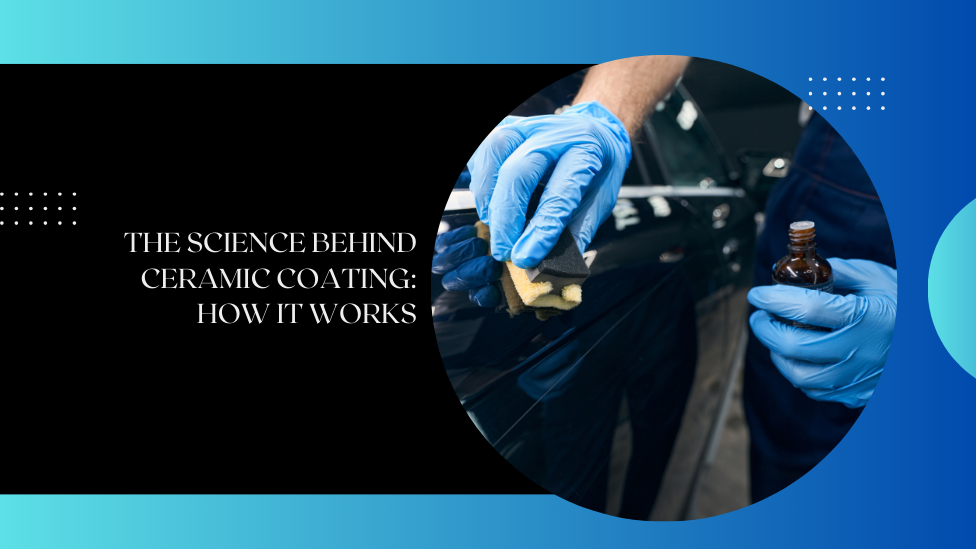When it comes to making your vehicle look pristine, most people focus on the exterior paint and the interior upholstery. But one of the most overlooked areas is the engine bay. Not only does a clean engine bay improve the appearance and resale value of your car, but it can also help you spot potential problems like leaks, worn-out hoses, or corrosion early. In this guide, we’ll walk you through how to clean and detail an engine bay safely, step by step.
Why Engine Bay Cleaning Matters
Your engine bay is the heart of your vehicle. It collects dust, dirt, road grime, and even oil over time. If neglected, this buildup can contribute to premature wear and tear, reduced performance, and even unpleasant smells. A thorough engine bay cleaning not only makes the space more presentable but also allows for better inspection and maintenance.
In some cases, such as auto shows or car meets, a detailed engine bay can be the finishing touch that sets your car apart.
Precautions Before You Start
Before diving into the cleaning process, there are a few safety precautions to take:
- Cool the engine: Never clean a hot engine. Allow it to cool for at least 30–45 minutes after driving to avoid burns and prevent warping or cracking engine components.
- Disconnect the battery (optional): While not always necessary, some detailers recommend disconnecting the battery to avoid electrical issues.
- Cover sensitive components: Use plastic bags or waterproof covers to protect components like the alternator, exposed wiring, air intake, and the battery terminals.
- Work in a well-ventilated area: Avoid enclosed spaces to reduce exposure to fumes and make rinsing easier.
Supplies You’ll Need
To properly detail your engine bay, gather the following items:
- Engine degreaser (citrus-based or water-based preferred)
- Soft-bristle detailing brushes
- Microfiber towels
- Plastic bags or cling wrap
- Hose with a spray nozzle or pressure washer (low pressure only)
- Compressed air or leaf blower (optional)
- Rubber and plastic protectant
- Gloves and safety glasses
Step-by-Step Guide to Engine Bay Cleaning
1. Initial Inspection and Prep
Open your hood and take a close look at your engine bay. Look for exposed wires, cracked hoses, or any signs of leaks. If you see oil leaks, consider fixing those before proceeding. Cover any delicate electronics or open filters to prevent water intrusion.
2. Dry Debris Removal
Use compressed air, a vacuum, or a brush to remove dry leaves, dirt, and loose debris from around the engine. This prevents the dirt from turning into a messy sludge when it mixes with water and degreaser.
3. Apply Degreaser
Spray a liberal amount of engine degreaser on the engine components, starting from the bottom and working your way up. This prevents the degreaser from dripping down over areas you’ve already cleaned.
Let it sit for 3–5 minutes, allowing it to break down oil, grease, and grime. Avoid letting it dry out, especially under direct sunlight.
4. Agitate with a Brush
Using a soft detailing brush, gently agitate the surfaces. Focus on dirty and oily areas, such as valve covers, fluid reservoirs, and the firewall. Take care around plastic components and wiring.
Step-by-Step Rinse Process
5. Rinse Lightly
Using a hose with a spray nozzle, rinse off the degreaser with low water pressure. You can also use a spray bottle filled with water for more control. The goal is to rinse without flooding or damaging any components.
Avoid spraying directly on electrical parts or connectors, even if they’re covered.
6. Dry Thoroughly
Use microfiber towels to blot dry any large water droplets. Follow up with compressed air or a leaf blower to push out water from tight crevices and hard-to-reach areas.
If you disconnected the battery, wait until everything is fully dry before reconnecting it.
Detailing the Engine Bay
This is where the real auto engine detailing magic happens. Once the engine bay is dry, apply a plastic and rubber protectant to hoses, covers, and plastic components. This not only restores a nice matte or satin finish but also helps protect against cracking and UV damage.
Avoid oily or shiny dressings, as they can attract dust and give the bay an unnatural appearance. Always follow manufacturer instructions and test any product in a small area first.
Finishing Touches
- Polish metal parts (if any) with appropriate polish for a shiny finish.
- Clean the underside of the hood, especially if it has a sound-deadening pad—dust it off and spot clean with degreaser if needed.
- Inspect all components to ensure nothing has come loose or shifted during cleaning.
Maintenance Tips
Once you’ve detailed your engine bay, you don’t need to deep clean it every month. Light maintenance every few weeks—like wiping down dust and checking for leaks—will keep it looking fresh.
If your vehicle is exposed to lots of dirt roads, heavy rain, or snow, more frequent cleanings may be necessary. In general, a proper engine bay detail every 3–6 months should be sufficient for most drivers.
FAQs About Engine Bay Detailing
Is engine bay cleaning safe for newer vehicles?
Yes, as long as you use a low-pressure water source and avoid soaking sensitive components. Most modern vehicles are designed to handle light moisture in the bay area.
Can I use household degreasers?
Stick to automotive-specific degreasers. Household degreasers can be too harsh and may damage rubber or plastic parts.
Is pressure washing safe for engine bays?
Only with extreme caution. If you use a pressure washer, ensure it’s on a low setting and you never point it directly at electronics or seals.
Final Thoughts
Whether you’re preparing for a car show or just taking pride in your ride, a clean engine bay reflects attention to detail. By following the steps above, you can safely complete an engine bay cleaning that enhances both aesthetics and function.
For those who prefer professional help, many detailing shops offer engine bay detailing as part of their services. Whether you choose DIY or professional service, keeping your engine bay clean pays off in the long run.





